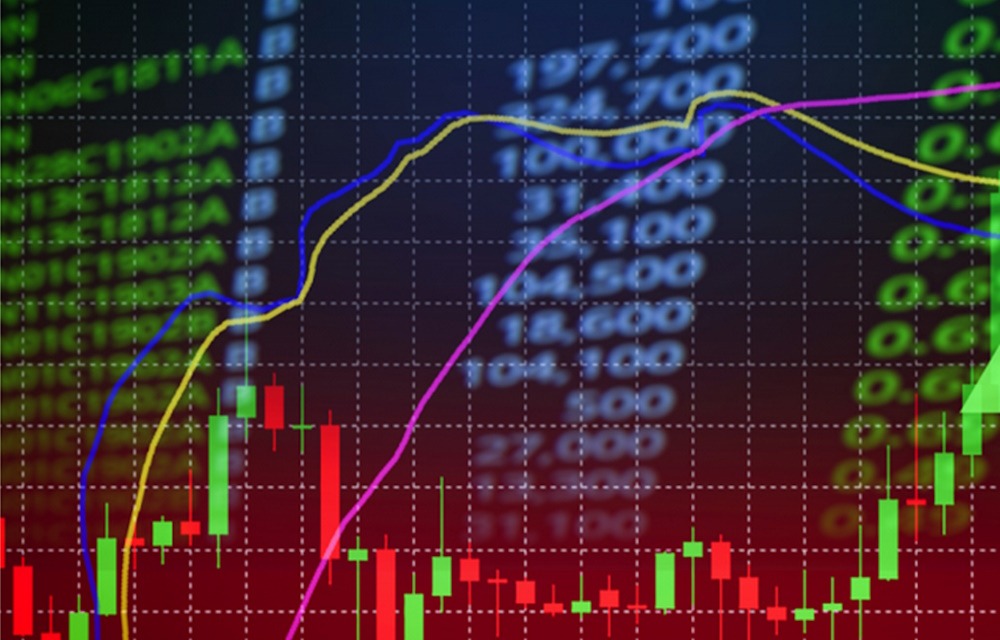SGX Nifty 50 Index Futures Drop Amid Global Market Jitters – What’s Next for Nifty 50?

SGX Nifty 50 index futures dropped amid global market jitters, signaling a weak opening for Indian equities. Rising U.S. bond yields, geopolitical tensions, and foreign investor outflows have added pressure on sentiment. Traders will watch key support levels and global cues to gauge Nifty 50’s next move.A balanced approach, combining strategic accumulation with risk management, can help investors look at the current market conditions effectively. For more insights, check out the Exness Go guide by TU to stay updated on financial trends and market strategies.
This article walks through the significance of SGX Nifty 50 Index Futures, the global factors contributing to their decline, their impact on Indian equities, the role of Gift Nifty and other global indicators, key support and resistance levels for Nifty 50 in 2025, and expert opinions on whether investors should consider buying the dip or exercise caution.
What are SGX Nifty 50 index futures and why do they matter?
Gift Nifty, formerly known as SGX Nifty live, is a futures contract traded on the NSE International Exchange (NSE IX) in GIFT City, Gujarat. It tracks the performance of the Nifty 50 index, which represents the 50 largest companies listed on the National Stock Exchange (NSE) of India. For traders following global market movements, Kospi Moneycontrol provides valuable insights into Asian markets, including South Korea’s Kospi index, which often influences broader emerging market trends alongside Gift Nifty.
Gift Nifty allows global investors, including foreign institutional investors (FIIs), to gain exposure to Indian equities without directly participating in the domestic market. Since it operates before the Indian markets open, it provides an early indication of market sentiment and expected trends for the Nifty 50. A decline in Gift Nifty typically signals a weak opening for Indian markets, while an uptick suggests a positive start.
Traders and institutional investors closely monitor Gift Nifty as a leading indicator of Nifty 50’s movement. It serves as an important tool for price discovery and sentiment analysis. Additionally, it offers a hedging mechanism for investors with exposure to Indian equities, allowing them to manage risk against market fluctuations.
With India’s growing importance in global markets, Gift Nifty has become a key instrument for international investors looking to participate in the Indian stock market while benefiting from extended trading hours and a regulated offshore platform. Keeping track of regional market trends, including Kospi on Moneycontrol, can help traders make more informed investment decisions in the ever-evolving financial landscape.
Global market jitters: Key factors behind the SGX Nifty 50 drop
The recent decline in the SGX Nifty 50 is driven by multiple factors affecting both domestic and global markets. Here are the key reasons behind the drop.
1. Corporate performance and sectoral impacts
- Banking sector. Major financial institutions like HDFC Bank ADR have seen stock declines. HDFC ADR, a key component of the Nifty 50, dropped 2.1% on February 20, 2025, ending a three-day rally. This weakness in banking stocks has pressured the index.
- Automobile industry. Maruti Suzuki India saw a 2% drop after its parent company, Suzuki Motor Corp, announced a reduction in planned electric vehicle launches in India from six to four by 2030. This decision has raised concerns over its long-term EV strategy.
2. Global trade uncertainties
- S. tariff policies. Statements from U.S. President Donald Trump on new tariffs exceeding 25% on imports of automobiles, pharmaceuticals, and semiconductors have added to global trade tensions. These tariffs could impact India’s pharmaceutical sector, which heavily exports to the U.S.
3. Foreign investment dynamics
- Capital outflows. Foreign investors have pulled out over $11 billion from Indian equities in 2025, reflecting caution amid global uncertainties and domestic market volatility.
4. Currency fluctuations
- Rupee depreciation. The Indian rupee weakened to 86.7125 against the U.S. dollar on February 21, 2025, due to increased dollar demand from importers and declining equities. A weaker rupee can deter foreign investors and negatively impact sentiment.
5. Broader market sentiment
- Valuation concerns. High stock valuations combined with weak corporate earnings have made investors cautious. The Nifty 50 dropped 0.75% to 22,759.35 on February 17, 2025, as investors reassessed their positions.
Impact of SGX Nifty 50 Futures on Indian stock markets
The SGX Nifty 50 futures, now known as GIFT Nifty, significantly influence the Indian stock markets. Traded on the NSE International Exchange in Gujarat’s GIFT City, GIFT Nifty offers global investors a platform to engage with Indian equities without direct access to Indian exchanges. This accessibility enhances liquidity and provides a broader spectrum of market participants.
Key impacts of GIFT Nifty on Indian stock markets
1. Pre-market indicators
- Early market sentiment. GIFT Nifty operates from 6:30 a.m. to 11:30 p.m. IST, starting well before Indian markets. Movements in GIFT Nifty serve as early indicators of market trends, helping traders anticipate the opening direction of Indian indices.
2. Hedging and risk management
- Strategic planning. Investors use GIFT Nifty to hedge positions and manage risks related to Indian market exposures, allowing them to respond to global events that affect Indian equities.
3. Extended trading hours
- Global event response. The extended hours of GIFT Nifty enable investors to react to international developments outside standard Indian market timings, making investment decisions more efficient.
4. Liquidity and participation
- Enhanced market depth. By allowing foreign investors to participate, GIFT Nifty contributes to increased liquidity and depth in the Indian stock markets, leading to more efficient price discovery.
How Gift Nifty and other global indicators influence Nifty 50
Gift Nifty, formerly known as SGX Nifty, along with other global indicators, plays a crucial role in influencing the Nifty 50 index. These factors impact market sentiment, investor decisions, and overall market direction.
1. Gift Nifty’s influence on Nifty 50
- Pre-market indicators. Gift Nifty operates from 6:15 a.m. to 2:45 a.m. the next day, well before Indian markets open. Movements in Gift Nifty often indicate the likely direction of the Nifty 50 at market opening. Traders and institutional investors track its performance to anticipate early trends.
- Hedging and risk management. Global investors use Gift Nifty futures to hedge their positions in the Indian market. This helps in managing risks associated with overnight global events and economic announcements.
2. Impact of global indices on Nifty 50
- Correlation with major indices. The performance of global stock indices like the Dow Jones, S&P 500, FTSE 100, and Nikkei 225 often influences Nifty 50. A sharp decline in these markets can trigger a similar reaction in Indian markets due to global risk sentiment.
- Sector-specific impact. A rise in the Nasdaq 100, which is technology-heavy, can boost Indian IT stocks like Infosys and TCS. Similarly, a drop in crude oil prices can benefit Indian companies reliant on oil imports, positively affecting the Nifty 50.
3. Global economic events and policies
- Trade policies and tariffs. Global trade disputes, such as U.S. tariff hikes on key imports, can impact Indian markets by affecting export-driven sectors like IT and pharmaceuticals.
- Foreign investment flows. Changes in U.S. Federal Reserve policies or European Central Bank rate decisions can lead to capital inflows or outflows from India. Large withdrawals by foreign institutional investors often result in a decline in the Nifty 50.
4. Currency fluctuations
- Exchange rate movements. The value of the Indian rupee against the U.S. dollar influences foreign investments. A weaker rupee can deter foreign investors and lead to capital outflows, impacting the Nifty 50. On the other hand, a stronger rupee can boost foreign interest in Indian equities.
Key support and resistance levels for Nifty 50 in 2025
Nifty 50 price analysis 2025 (Source: TradingView)
Based on the provided Nifty 50 charts, here are the key support and resistance levels for 2025 based on trendlines, moving averages, and historical price action.
Key support levels
- 22,770 – 22,700: This is the immediate support zone where price has bounced multiple times. A breakdown below this level could lead to further downside.
- 22,200 – 22,000: Strong support as indicated by previous consolidation and trendline confluence. A break below this could accelerate selling pressure.
- 21,500 – 21,300: A major support zone where long-term buyers could step in.
- 20,000 – 19,800: Critical psychological level and historical demand zone.
Key resistance levels
- 23,140 – 23,200: Near-term resistance where moving averages (20, 50 EMA) are converging.
- 23,722 – 23,800: Strong resistance from previous highs and a key supply zone.
- 25,000 – 25,100: A breakout above this level would indicate strong bullish momentum.
- 25,944 – 26,000: Major resistance level, marking all-time highs and an important breakout zone.
Technical outlook
- Short-term trend: Weakness persists as Nifty trades near key support levels. Holding 22,700 will be crucial for any short-term bounce.
- Medium-term trend: A break above 23,200 could lead to recovery, while failure to hold 22,200 may trigger a deeper correction.
- Long-term trend: Above 25,000, Nifty could enter a strong bullish phase, whereas a break below 21,500 could signal extended weakness.
Should investors buy the dip or stay cautious? Expert opinions
The recent downturn in Indian equity markets has sparked a debate among investors on whether to buy the dip or adopt a cautious approach. According to the insights of financial analyst Anton Kharitonov, the decision depends on a combination of technical signals, economic conditions, and global uncertainties.
Those in favor of buying the dip point to the resilience of key stocks that have maintained strength despite broader market declines. Companies such as Reliance Industries and Bajaj Finserv continue to show stability, suggesting that fundamentally strong businesses may offer attractive long-term opportunities. Additionally, technical indicators reveal that over 286 stocks in the Nifty 500 index have a 14-day relative strength index (RSI) below 40, a level typically considered oversold. Historically, such conditions have led to market rebounds, signaling potential entry points for investors looking to capitalize on short-term recoveries.
However, a more cautious perspective considers economic headwinds and earnings concerns. Corporate earnings growth has slowed, and the economy is displaying signs of weakness. The Nifty 50 has declined by approximately 13% from its peak in late 2024, underperforming other Asian markets. This raises questions about the sustainability of earnings and the overall health of the market. Global factors further compound the uncertainty. Trade tensions, potential U.S. tariff hikes, and historically high stock valuations contribute to elevated volatility. As a result, some experts suggest a wait-and-watch approach, advising investors to remain patient and assess macroeconomic trends before making significant market moves.
While there is merit in both strategies, the key lies in balancing risk and opportunity. Investors should focus on fundamentally sound stocks, closely monitor technical indicators, and stay informed about global market trends to make well-timed decisions in an uncertain economic environment.
Conclusion
The decline in SGX Nifty 50 Index Futures has raised concerns among investors, but it is essential to analyze the broader context before making investment decisions. Global market jitters, rising U.S. interest rates, and corporate earnings slowdowns have contributed to the market downturn. However, India’s long-term growth potential remains intact, with sectors like technology, banking, and infrastructure expected to drive future gains.
Investors should keep an eye on key support and resistance levels while factoring in global indicators like Gift Nifty, U.S. Fed policy, and geopolitical developments. While some experts see the current dip as a buying opportunity, others suggest caution due to ongoing volatility.
FAQs
What factors can cause SGX Nifty Futures to decline?
Several factors contribute to SGX Nifty declines, including weak global cues, geopolitical tensions, economic data releases, changes in interest rates, and foreign institutional investor (FII) selling. Market sentiment is also influenced by events in major economies such as the US, China, and Europe.
Should Indian investors panic when SGX Nifty Futures drop?
No, investors should not panic. While SGX Nifty provides an early indication of market sentiment, intraday volatility, domestic economic factors, and company earnings can still influence the actual opening and movement of the Nifty 50 index in India.
How do global markets impact SGX Nifty movements?
SGX Nifty is heavily influenced by overnight trends in US markets (Dow Jones, Nasdaq, S&P 500), Asian markets (Nikkei, Kospi, Hang Seng), and European indices. A sharp fall in global equities often leads to negative movements in SGX Nifty Futures.
Can SGX Nifty Futures recover after a sharp decline?
Yes, SGX Nifty can recover if positive domestic factors emerge, such as strong corporate earnings, government policy announcements, or better-than-expected macroeconomic data. Additionally, short covering by traders can lead to intraday recoveries.
About the Author :
This article was written by Andrey Mastykin, a financial expert and editor at Traders Union. With more than 15 years of experience in trading and investing, he has deep expertise in trading strategies, technical analysis, and risk management.










